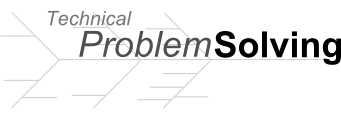When faced with a large amount of data, one if the first things I do is graph the data in some way to get a visual impression. I'll even graph simple linear calibration plots since a quick glance will give a better impression of the data than looking at the slope, intercept and correlation coefficient. In this case, the visualization shows more than the individual data.
However, the opposite can happen, even though I'm sure you're familiar with the adage, "a picture is worth a thousand words." Recently the Flowing Data site held a visualization contest. The results were interesting. Even though everyone started with the same data set, each visualization tended to emphasize something different about the data set. As a whole, the visualizations presented a complete picture and highlighted aspects of the data one couldn't see from just the numbers, but each individual visualization tended to focus on one thing at the expense of others.
This may be your intent when visualizing data, but watch out for your own bias. Always include the data used to create your visualization (or when this is not practical a reference to it) so that others with a different perspective can visualize the data their own way and perhaps glean something different than you did.
There is fine line between illuminating data for your audience and prejudicing them.
Showing posts with label Evaluation. Show all posts
Showing posts with label Evaluation. Show all posts
Friday, December 26, 2008
Tuesday, November 18, 2008
Beginner versus Expert
Since my last post I have been doing some thinking about the Beginner's versus Expert mind. Clearly there must be balance between these two extremes. One the one hand, you want someone experience working on the problem. When you have bypass surgery your main concern is how many times your doctor has performed one. You don't look for a resident who has only watched a bypass surgery in the hope that they will come up with an innovative approach. On the other hand, an expert may jump to conclusions based on past history and miss a nuance that points to a different solution.
The same processes that make us creative by allowing us to see relationships between seemingly unrelated things can lead to error. Drawing conclusions from small amounts of information can help you react/respond to new situations but sometimes we jump to conclusions, classifying a new situation as an old one even when there are significant differences.
How to avoid this pitfall of the expert? It is critical to always circle back and evaluate your solution to insure it is working. Problem solving involves a cycle - it is never a single pass.
The same processes that make us creative by allowing us to see relationships between seemingly unrelated things can lead to error. Drawing conclusions from small amounts of information can help you react/respond to new situations but sometimes we jump to conclusions, classifying a new situation as an old one even when there are significant differences.
How to avoid this pitfall of the expert? It is critical to always circle back and evaluate your solution to insure it is working. Problem solving involves a cycle - it is never a single pass.
Subscribe to:
Posts (Atom)



